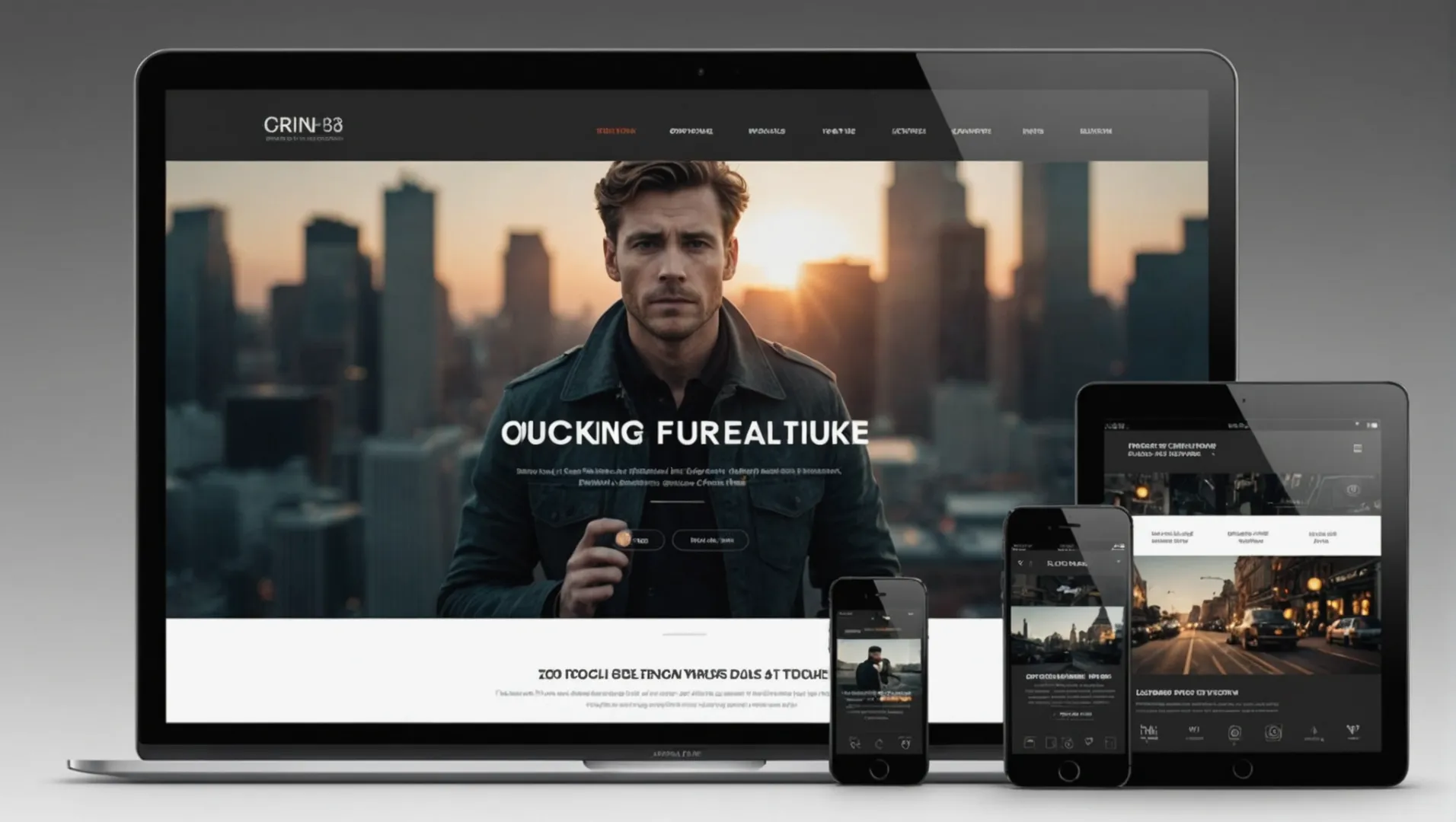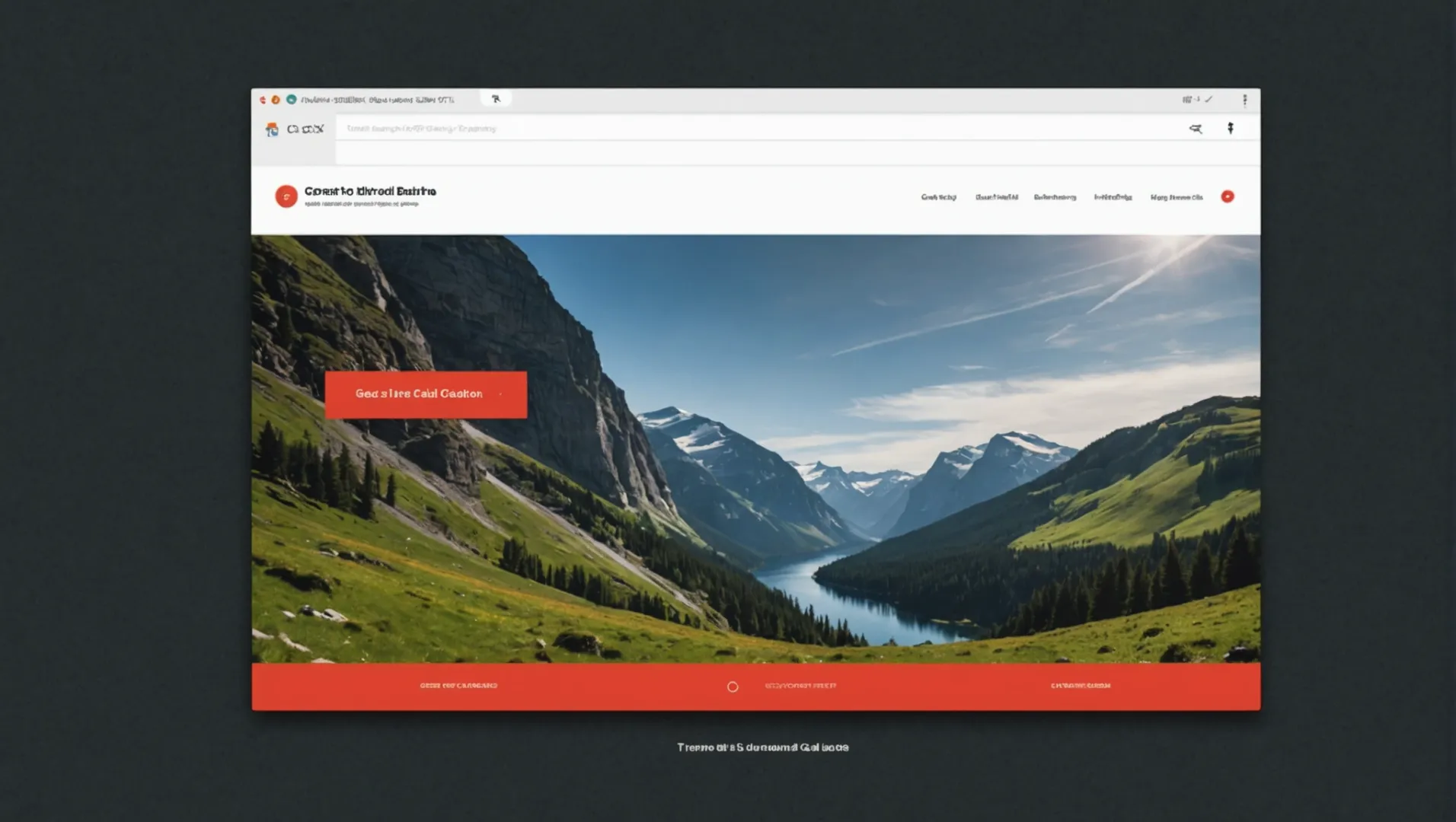
Crafting the perfect landing page copy isn't just about selling cutlery; it's about connecting with customers on a deeper level.
The best landing page copy for selling disposable cutlery highlights eco-friendliness, product durability, and customization options. It uses clear CTAs and persuasive language to resonate with eco-conscious consumers and event planners looking for quality, sustainable options.
Let’s dive into the nitty-gritty of each component that can elevate your copywriting skills and ultimately boost your sales.
Eco-friendliness is a key selling point for disposable cutlery.True
Eco-friendly cutlery appeals to environmentally conscious consumers, enhancing sales.
How Can You Use SEO to Enhance Your Landing Page?
Leveraging SEO is crucial for enhancing your landing page's visibility and conversion potential. But how can you effectively use SEO techniques to boost performance?
Use targeted keywords, optimize meta tags, and improve page load speed to enhance your landing page's SEO. These strategies increase visibility, attract relevant traffic, and improve user experience.

Target the Right Keywords
When enhancing your landing page with SEO, start with thorough keyword research1. Identify keywords that align with your audience's search intent and incorporate them naturally into headlines, subheadings, and body text. For a page selling disposable wooden cutlery, phrases like "eco-friendly cutlery" or "biodegradable utensils" are crucial.
Optimize Meta Tags
Meta tags, including title tags and meta descriptions, play a vital role in SEO. Craft compelling title tags that include primary keywords to improve search engine rankings. A meta description should succinctly convey the value of your product and entice users to click through to your landing page.
Enhance Page Load Speed
A fast-loading page not only improves user experience but also positively impacts SEO rankings. Use tools like Google PageSpeed Insights to identify areas for improvement. Compress images, leverage browser caching, and minimize HTTP requests to enhance loading times.
Improve Mobile Responsiveness
With a significant portion of traffic coming from mobile devices, ensure your landing page is mobile-friendly. Implement a responsive design that adjusts seamlessly across different screen sizes. This practice not only boosts SEO but also enhances user engagement and conversion rates.
Utilize Structured Data
Incorporating structured data helps search engines understand your content better and can lead to enhanced visibility through rich snippets. Use schema markup to highlight important elements like product ratings, prices, and availability.
Create High-Quality Backlinks
Developing a robust backlink profile is essential for SEO success. Seek opportunities for guest posting2 or collaboration with industry influencers to acquire valuable backlinks. Quality backlinks enhance your domain authority and improve search engine rankings.
Using keywords in headlines boosts landing page SEO.True
Keywords in headlines improve relevance and search visibility.
Ignoring meta tags does not affect SEO rankings.False
Meta tags are crucial for SEO, affecting search engine rankings.
What Role Do Customer Testimonials Play in Conversions?
Customer testimonials are more than just words; they're powerful tools that can significantly boost conversion rates. But how exactly do they work?
Customer testimonials enhance conversions by building trust, validating product claims, and creating relatable experiences. They provide social proof that reassures potential buyers about the quality and reliability of a product or service.

Building Trust Through Authentic Voices
In the digital age, trust is currency. Consumers are bombarded with choices, making it crucial for businesses to stand out. Customer testimonials offer3 an authentic voice that potential buyers can relate to. Unlike traditional marketing, these reviews come from real people who have experienced the product firsthand.
Consider the scenario of purchasing eco-friendly disposable cutlery. A testimonial from a café owner detailing how these products aligned perfectly with their sustainable values can resonate deeply with other business owners or environmentally conscious consumers.
Validating Product Claims
Testimonials serve as validation for the claims made in marketing materials. For instance, if a product page boasts about the durability and aesthetic appeal of wooden cutlery, a customer's positive review about its sturdiness and elegance during an event provides concrete evidence. This validation reassures potential customers that the product will meet their expectations.
| Claim | Customer Testimonial Example |
|---|---|
| Eco-Friendly | "Perfect for our eco-conscious café!" |
| Durable & Functional | "Handled all our event needs without breaking!" |
| Aesthetic Appeal | "Guests loved the rustic charm at our wedding." |
Creating Relatable Experiences
Testimonials often tell a story. They share the unique experiences of users, which can be incredibly persuasive. Potential customers find comfort in knowing that others have had positive outcomes using the same product or service.
For example, an event planner's testimonial about using wooden cutlery at a corporate event not only highlights the product's functionality but also paints a picture of a successful, eco-friendly gathering. This narrative can help convince4 other planners considering similar sustainable options.
Leveraging Testimonials in Marketing Strategies
Integrating testimonials strategically throughout your marketing channels can amplify their impact. Here are a few ways to utilize them effectively:
- Landing Pages: Feature testimonials prominently alongside product details to immediately build credibility.
- Social Media: Share testimonials in posts or stories to reach a broader audience.
- Email Campaigns: Include customer reviews in newsletters to nurture leads and encourage conversions.
By weaving customer testimonials into your marketing strategy, you not only enhance conversion rates but also cultivate a community of satisfied and loyal customers eager to advocate for your brand.
Testimonials increase conversion rates by 30%.False
While testimonials boost conversions, the exact percentage can vary greatly.
Testimonials offer social proof for potential buyers.True
Testimonials provide evidence from real users, enhancing credibility.
Why Is Mobile Optimization Critical for Landing Pages?
In today's mobile-driven world, ensuring your landing page is optimized for mobile users can be the difference between securing a lead or losing a customer. But why is mobile optimization so essential?
Mobile optimization is vital for landing pages as it ensures a seamless user experience on smartphones and tablets, enhancing engagement and conversion rates. With mobile traffic surpassing desktop usage, an unoptimized page risks high bounce rates and lost opportunities.

The Growing Dominance of Mobile Traffic
The shift towards mobile browsing is undeniable. According to recent statistics, over half of global web traffic comes from mobile devices. This trend means that if your landing page isn't optimized for mobile, you could be alienating a significant portion of your audience.
Mobile users have different needs and expectations compared to desktop users. They seek quick access to information, easy navigation, and fast loading times. A responsive design5 that adapts to various screen sizes is crucial to meet these needs.
User Experience and Conversion Rates
User experience (UX) is a critical factor in conversion rates. On mobile devices, UX can be heavily impacted by slow loading times, difficult navigation, or hard-to-read text. Google reports that 53% of mobile users abandon sites that take longer than three seconds to load.
To enhance UX, consider the following:
- Simplified Navigation: Use a clean and straightforward menu structure.
- Readable Text: Ensure fonts are large enough to read without zooming.
- Optimized Images: Compress images to reduce loading times without sacrificing quality.
A well-optimized mobile site6 not only reduces bounce rates but also boosts conversions by making the purchasing process smoother and more intuitive.
The Importance of SEO in Mobile Optimization
Google's mobile-first indexing means that it primarily uses the mobile version of the content for ranking and indexing. If your landing page isn't mobile-friendly, it might negatively impact your search engine rankings.
SEO for mobile requires:
- Responsive Design: Ensures content displays correctly on all devices.
- Mobile-Friendly Content: Use shorter paragraphs and bullet points for better readability.
- Speed Optimization: Leverage tools like Google's PageSpeed Insights to improve load times.
By implementing SEO best practices7, you enhance your page's visibility, driving more organic traffic to your site.
Meeting User Expectations with Mobile-First Design
Today's consumers expect brands to meet them where they are—on their phones. A mobile-first approach focuses on designing for the smallest screens first, then scaling up. This strategy ensures that the most important content is prioritized for mobile users, enhancing their experience.
Use tools like A/B testing to evaluate different elements on your landing page, such as button placement or color schemes, ensuring they work well across devices. By continually refining your approach, you can improve user satisfaction and ultimately drive higher conversions.
In conclusion, while desktop optimization remains important, focusing on mobile optimization is not just an option—it's a necessity in today's digital landscape.
Mobile traffic exceeds desktop usage globally.True
Over half of global web traffic comes from mobile devices.
53% of mobile users abandon slow-loading sites.True
Google reports this abandonment rate for sites taking over three seconds to load.
How to Create a Compelling CTA That Converts?
Crafting a compelling CTA is crucial for transforming mere interest into tangible action on your landing page. But what makes a CTA truly effective?
An effective CTA is clear, action-oriented, and aligns with the user's needs and desires. It should create urgency, use persuasive language, and stand out visually to guide the user towards conversion effortlessly.

Understanding the Purpose of a CTA
A Call to Action (CTA) is more than just a button or a link; it's an invitation for your audience to engage further with your brand. An effective CTA prompts users to take specific actions like signing up, purchasing, or learning more about your product or service. The key is to ensure that this action aligns perfectly with the user's journey.
Clarity and Simplicity in Language
A compelling CTA uses clear and straightforward language. Avoid jargon and keep it simple so that users instantly understand what they need to do. For instance, instead of saying "Commence Your Purchase Process," opt for "Buy Now." The latter is concise and directly communicates the intended action.
Creating a Sense of Urgency
Incorporating urgency in your CTA can significantly boost conversions. Phrases like "Limited Time Offer" or "Get Yours Before It’s Gone" motivate users to act quickly rather than procrastinate. This strategy plays on the fear of missing out (FOMO), compelling users to click without delay.
Aligning with User Intent
Your CTA should resonate with what the user wants at that moment. If they are browsing a blog about eco-friendly living, a CTA such as "Discover Eco-Friendly Products" would be more relevant than "Shop Electronics." Understanding user intent ensures that your CTA feels like a natural next step.
Visual Design and Placement
The design of your CTA should make it stand out from the rest of the page. Use contrasting colors and bold fonts to draw attention. Additionally, its placement is crucial; typically, CTAs perform better when placed above the fold or after informative content where the user has enough context to decide.
Example Table: CTA Elements and Impact
| Element | Description | Impact on Conversion |
|---|---|---|
| Action-Oriented Text | Directs user action clearly | High |
| Contrasting Color | Visually stands out from surrounding content | Moderate |
| Urgency Words | Creates a time-sensitive prompt | High |
| User Alignment | Matches the user's current intent or need | High |
A/B Testing for Optimization
Testing different variations of your CTAs is essential for understanding what works best for your audience. Experiment with text, color, placement, and size to find the most effective combination. A/B testing provides valuable insights into user preferences and helps refine your CTAs for maximum impact.
By focusing on these elements, you can craft CTAs that not only capture attention but also drive conversions effectively. Learn more about A/B testing8 to refine your CTAs and enhance their performance.
CTAs should use complex language for effectiveness.False
Simple, clear language is more effective for CTAs than complex language.
Urgency in CTAs can boost conversion rates.True
Creating urgency with phrases like 'Limited Time Offer' encourages quick action.
Conclusion
A well-crafted landing page significantly impacts sales. Focus on clarity, benefits, and a strong CTA to engage and convert visitors.
-
Learn how to identify the best keywords for your target audience.: Learn what keyword research is, why it's important, how to do research for your SEO strategy, and how to choose the right keywords for your ... ↩
-
Discover methods to build a strong backlink profile.: How to Get High Quality Backlinks (7 Top Strategies) · 1. Become a Source For Reporters and Bloggers · 2. Publish “Skyscraper” Content · 3. Build Links From ... ↩
-
Learn how testimonials act as authentic endorsements.: 1. Share the customer's credentials · 2. Add a photo of the client · 3. Showcase your customer testimonials on your homepage · 4. Turn testimonials into a case ... ↩
-
Discover why storytelling enhances testimonial effectiveness.: Brand storytelling uses narratives to create an emotional, value-driven connection between your customers and your brand. The most powerful ... ↩
-
Learn why responsive design is crucial for meeting diverse user needs.: Consistency across Devices: A responsive design ensures that your branding, layout, and content remain consistent across different devices. This ... ↩
-
Discover practical tips to enhance your site's mobile usability.: 8 Ways to Optimize Your Website for Mobile Devices · 1. Test Your Site Using Google's Mobile-Friendly Tool · 2. Use Custom CSS to Make Your ... ↩
-
Explore strategies to improve your site's mobile search rankings.: To improve mobile SEO for answer boxes, you need to: Answer questions correctly and relevantly. Use the questions as subheadings. ↩
-
Gain insights into optimizing CTAs through effective A/B testing strategies.: A/B testing helps you improve your sales and lead generation by showing you which version of an asset, such as a CTA button, headline, or form ... ↩

